CESAM Framework
3 VISIONS FOR MASTERING SYSTEM COMPLEXITY
An essential architectural framework for mastering complexity
The complexity of a system makes it necessary to have multiple representations, each associated with a point of view, which is necessarily partial. To effectively understand this complexity, the number of views of a system must be limited, and each view must have unambiguous content.
The CESAM architecture framework, designed to combine simplicity, power and adaptability, defines just the right set of views, accompanied by a proven methodology for mastering complex systems in various sectors such as automotive, aeronautics, energy, construction or medical.
| The visions of the CESAM framework
Operational, functional, constructional
The premise of the CESAM Framework is that any system can be described according to three visions, which correspond to the three fundamental perspectives from which any system can be described:
➤ Operational vision: The system is described from the perspective of its environment, in particular to understand its external needs and constraints, the services to be provided, and its uses.
➤ Functional vision: The system is described from the perspective of its behavior, i.e., the functions it performs, their organization, and the associated requirements.
➤ Organic vision: The system is described from the perspective of the components that implement the functions and meet the constraints of the environment and the associated requirements.
Each of the 3 visions is characterized by the same 5 aspects: expected properties, states, static elements, scenarios and interfaces.

to describe any system.
| Adaptability, Collaboration and Optimization
The architect, key to the CESAM framework
The CESAM framework derives its value from its solid foundation and its ability to adapt to a project’s objectives. However, its true strength lies in its users: systems or enterprise architects. Their role is crucial in selecting the framework’s tools, adapting them to needs, and integrating them into the decision-making process.
A framework doesn’t work alone: it requires human qualities such as critical thinking, collaboration, and the art of asking the right questions—why create a view, for whom, and for what purpose?
It’s this intelligence of use that makes it a true lever for success.
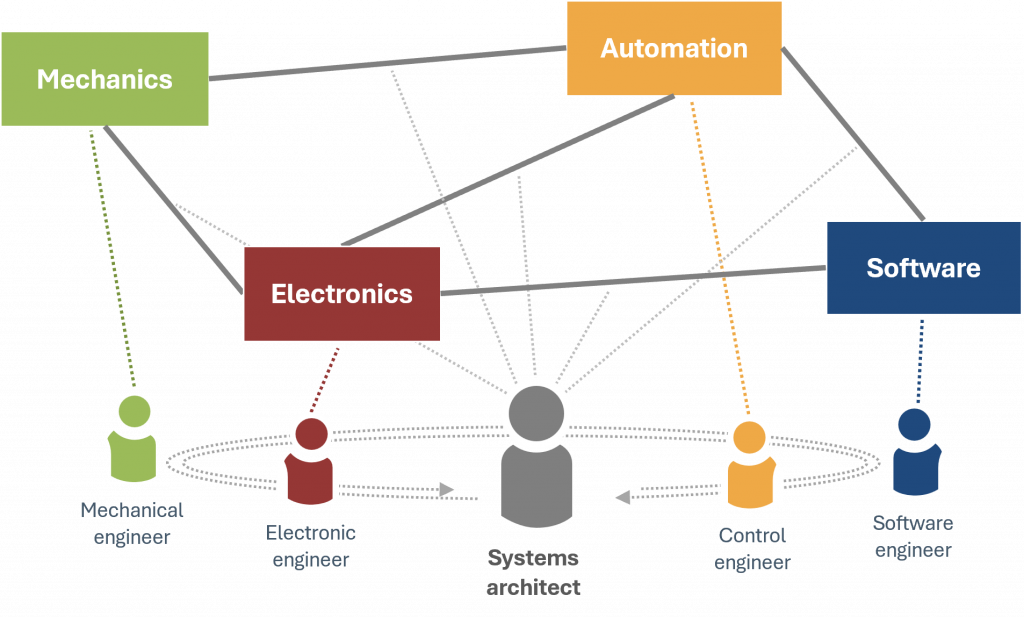
A flexible base for all contexts
By being a clear and accessible core, the CESAM framework provides a true foundation for thought that adapts to various contexts, whether normative, sectoral, or organizational. It allows teams to navigate with ease between different imposed frameworks, development references, system engineering standards, or modeling tools.
Without such a framework, changes in context or sector can be confusing, requiring reinterpretation and learning new approaches.
On the other hand, an architect who masters the CESAM framework becomes independent of these variations: he has a powerful reading grid which allows him to interpret, integrate and understand new environments in an efficient and coherent manner.
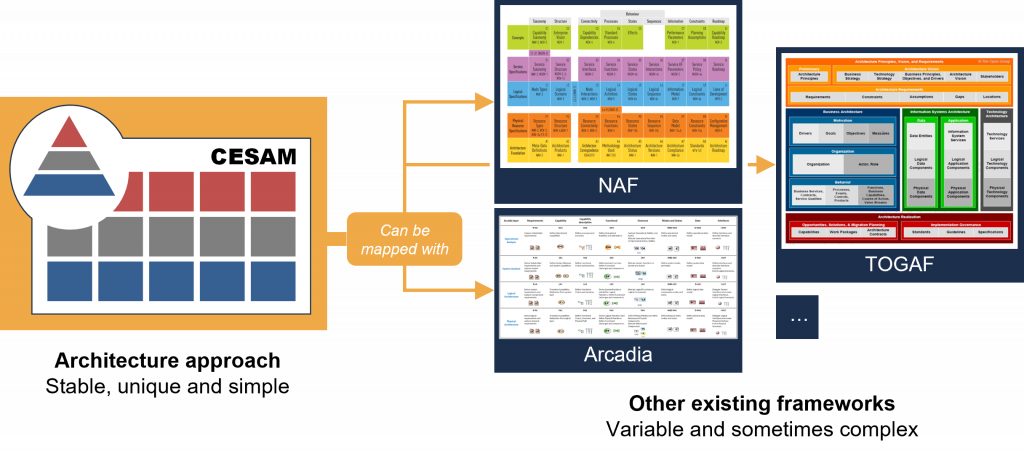
A collaborative and scalable tool
The CESAM framework is a scalable tool designed to support the project at every stage. It facilitates discussions by quickly identifying key elements during meetings and capitalizing on proposals, design decisions, and their rationale.
Its collaborative use allows teams to align more quickly by replacing unnecessary misunderstandings with essential, high-value-added discussions.
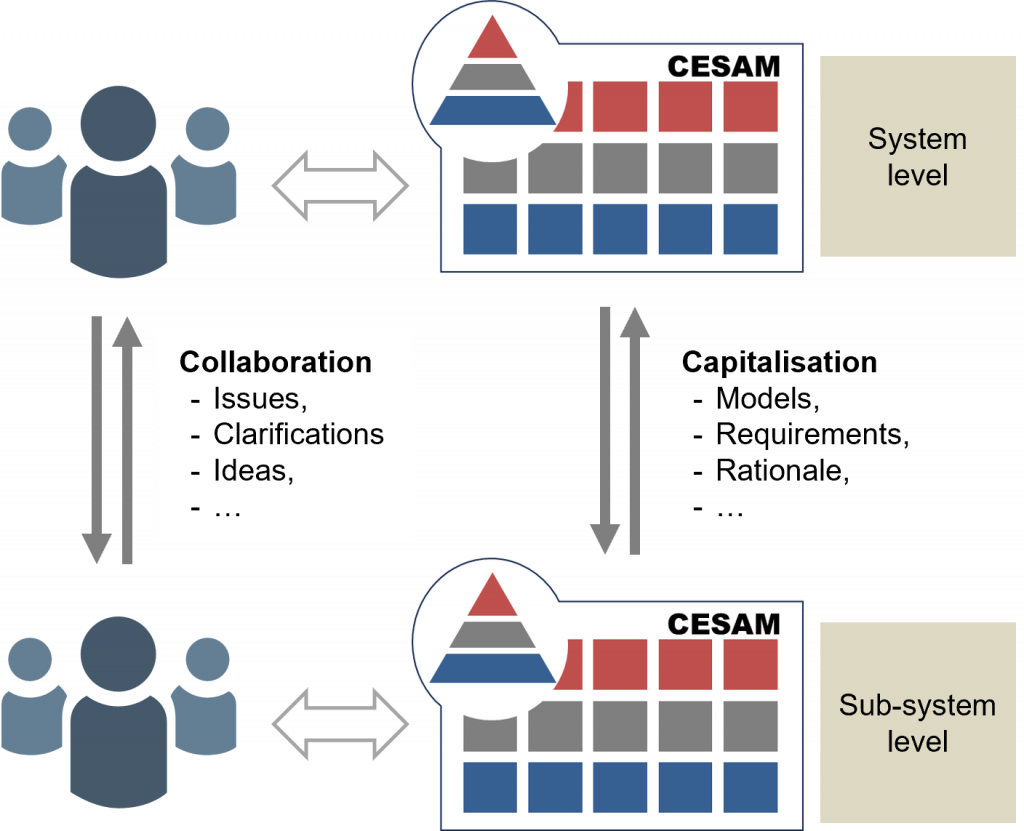
CESAM: recursion and optimization
The CESAM framework enables comprehensive modeling without redundancy thanks to its structured views. This optimizes system design by focusing efforts on essential elements and avoiding excessive modeling, thus ensuring a consistent and adaptable architecture.
By identifying and modeling risks at the earliest stages, CESAM allows them to be addressed quickly. This ensures greater control of technical risks and guarantees the quality of the final system, while facilitating an optimal verification and validation strategy.
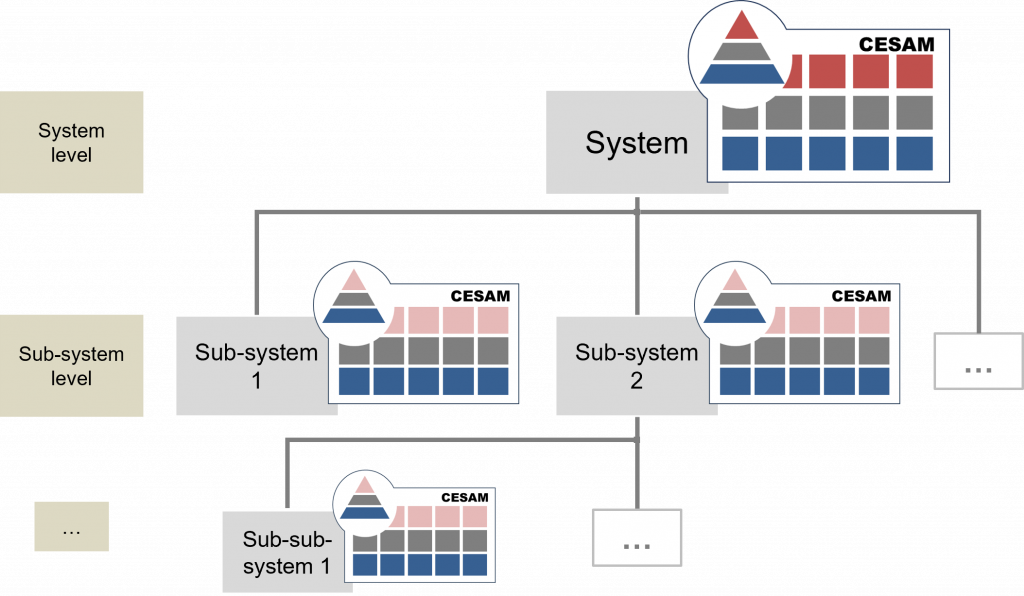
| A key lever for the success of your complex projects
The CESAM framework is central to all of CESAMES’ expertise, whether in systems architecture, enterprise architecture, or product line architecture. It provides a powerful and adaptable framework, enabling architects to address complex issues while ensuring a consistent and structured approach.
Its use makes it possible to manage system complexity by limiting viewpoints while ensuring their clarity and precision. The CESAM framework’s adaptability also makes it easy to adapt to diverse contexts, whether in terms of sectors, standards, or methodologies.
As a pillar of MBSE (Model-Based Systems Engineering), the CESAM framework is essential in the modeling process, ensuring quality, traceability, and risk management throughout the project. It facilitates collaboration between teams, promotes informed and rapid decision-making, and provides an integrated view of complex systems.
With over 8,000 people trained in its use, it is a key success factor for our customers. It allows us to effectively address design, modeling, and validation challenges, while adapting to changing projects and environments.
||||| Resources
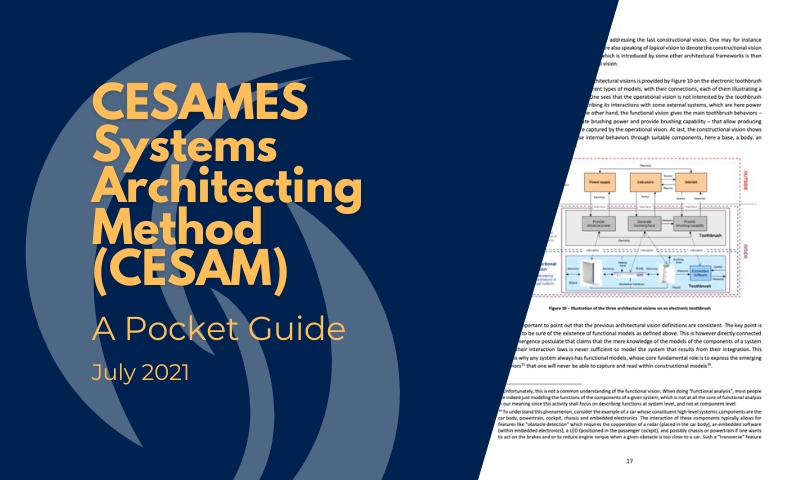
DOCUMENT [EN]
Pocket Guide
CESAMES Systems Architecting Method (CESAM) is a systems architecting & modeling framework which develops since 2003 in close interaction with many leading industrial companies in areas such as aeronautics, automotive, civil engineering, defense, energy, health, railway and space. It was initiated within the academic sphere in the context of the “Engineering of Complex Systems” industrial chair in France (Dassault Aviation – DCNS – DGA – Thales – Ecole Polytechnique). Nowadays the members of CESAM Community act however as the core developers & contributors of the CESAM framework which is presented in a light version in this pocket guide.
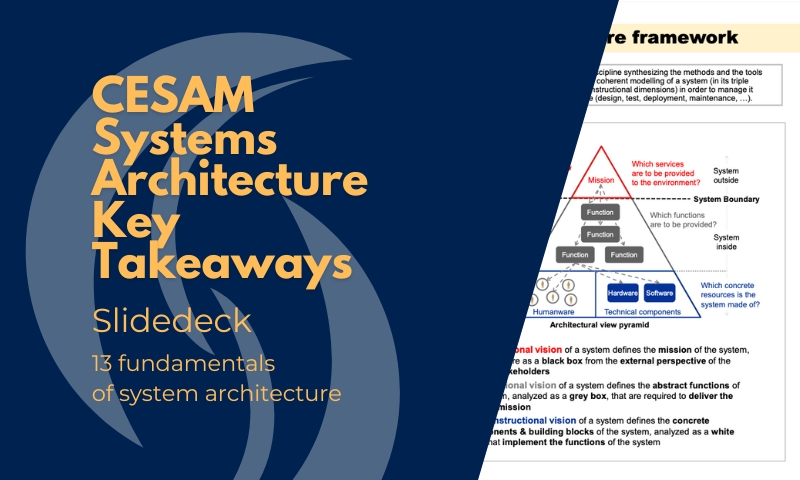
DOCUMENT [EN]
CESAM Systems Architecture Key Takeaways
Complex projects are characterized by the multiplicity of components, technologies, and stakeholders and above all by the number of interfaces to be controlled. Complex projects duration combined with the acceleration of processes and services evolutions mean that most of the phases studies will be initiated while many of the structuring parameters are not yet defined… which can lead to many pitfalls.
Systems architecture provides valuable guidance to guarantee efficient and sustainable development while de-risking the projects. The objective is to anticipate design risks during the early phases of the project to minimize systemic problems and thus save time and cost.
Discover the 13 fundamentals of system architecture.
